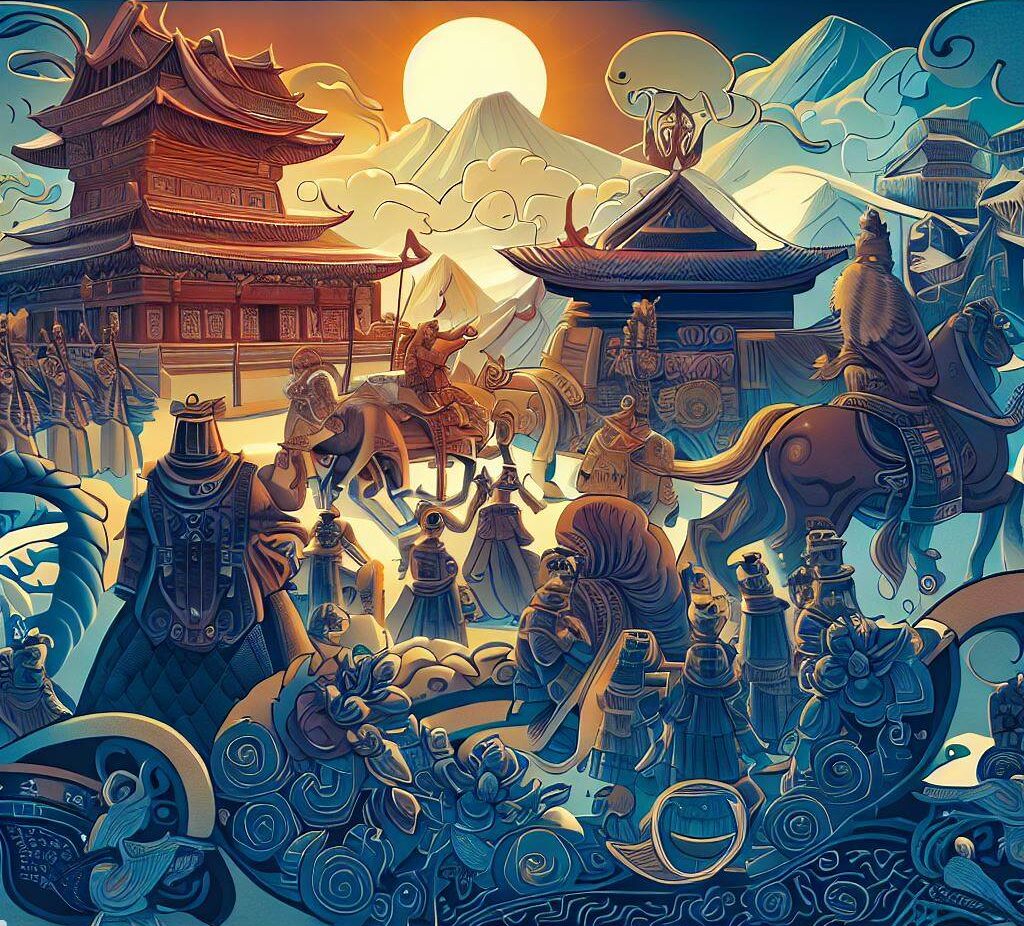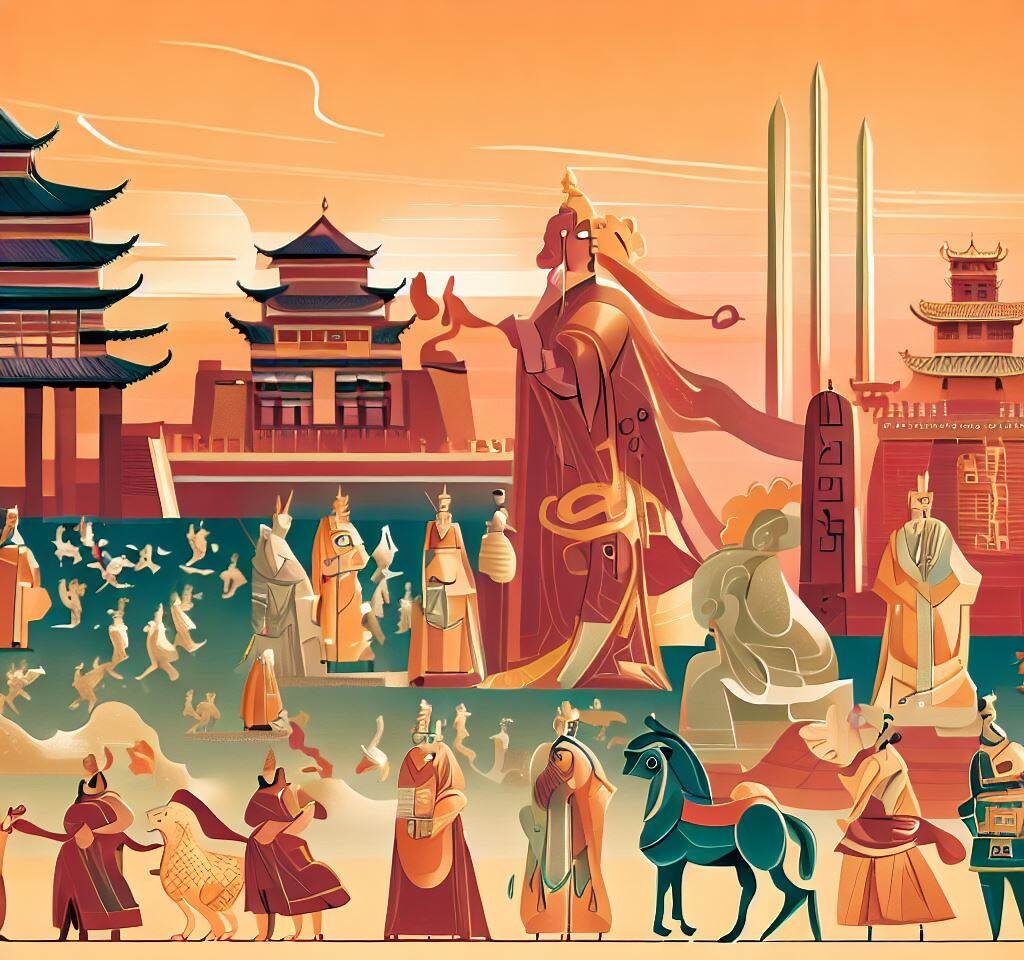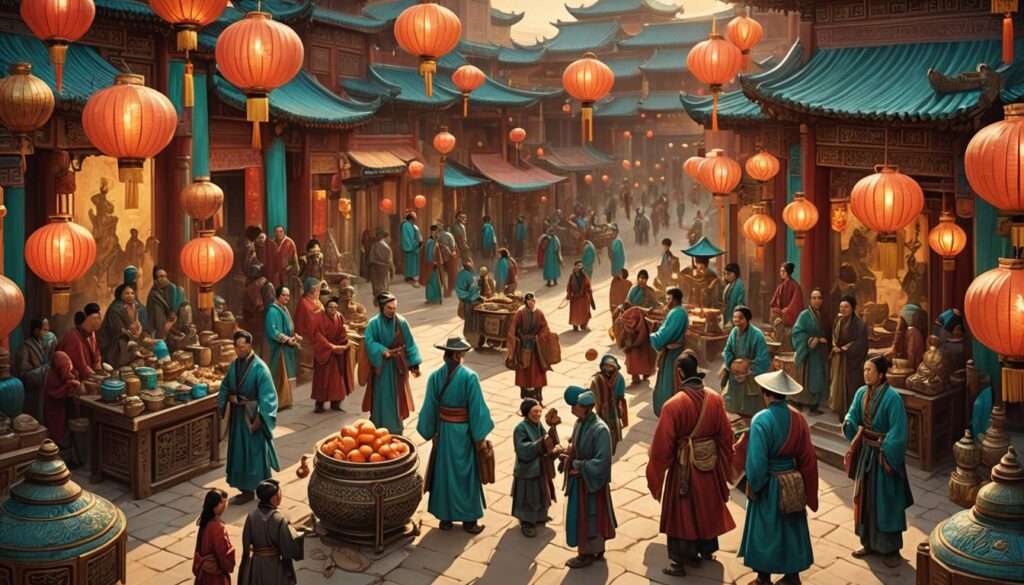The Magnificent Dynasties of China

The Magnificent Dynasties of China
China’s history is adorned with a captivating array of dynasties, each leaving an indelible mark on the nation’s cultural, political, and socioeconomic landscape. For thousands of years, these dynastic periods shaped the course of China’s development, propelled it to great heights, and witnessed remarkable achievements in art, philosophy, science, and governance. This article takes you on a journey through the magnificent dynasties of China, highlighting their contributions and enduring legacies.
- The Xia Dynasty (c. 2070-1600 BCE)
Considered the first dynasty in Chinese history, the Xia Dynasty’s existence was long shrouded in myth and legend until recent archaeological discoveries provided evidence of its legitimacy. The Xia period laid the foundation for Chinese civilization, establishing early forms of governance, agriculture, and craftsmanship. - The Shang Dynasty (c. 1600-1046 BCE)
Renowned for its impressive bronze casting techniques, the Shang Dynasty excelled in artistry and warfare. It witnessed the emergence of a sophisticated writing system known as Oracle Bone Script, reflecting the society’s deep connection with the spiritual realm. The Shang Dynasty also witnessed the establishment of a feudal system, with powerful nobles ruling over territories. - The Zhou Dynasty (c. 1046-256 BCE)
The Zhou Dynasty is known for its pivotal role in shaping the Chinese political landscape. It introduced the concept of the “Mandate of Heaven,” which justified the overthrow of a ruling dynasty should it lose the divine approval of the heavens. This period witnessed the emergence of Confucianism and Daoism, two profound philosophies that continue to influence Chinese society today. - The Qin Dynasty (221-206 BCE)
Under the visionary rule of Emperor Qin Shi Huang, the Qin Dynasty unified China, laying the groundwork for a centralized bureaucracy and standardized writing, currency, and measurements. It is renowned for the creation of the Great Wall of China and the Terracotta Army, testaments to the empire’s engineering prowess and military might.

- The Han Dynasty (206 BCE-220 CE)
The Han Dynasty is considered a golden age in Chinese history, characterized by remarkable advancements in governance, arts, and sciences. The empire’s prosperity led to the flourishing of Confucianism as the state ideology, promoting education and civil service examinations. The Silk Road, connecting China with the outside world, facilitated cultural exchange and trade. - The Tang Dynasty (618-907 CE)
Renowned as a period of great cultural and economic prosperity, the Tang Dynasty is often regarded as a pinnacle of Chinese civilization. It witnessed the spread of Buddhism, the flourishing of poetry, and the advancement of science and technology. The empire’s cosmopolitan capital, Chang’an (present-day Xi’an), bustled with international merchants, scholars, and artists. - The Song Dynasty (960-1279 CE)
The Song Dynasty witnessed transformative changes in agriculture, technology, and urban development. Innovations such as gunpowder, compasses, and printing techniques revolutionized warfare, navigation, and information dissemination. The era’s exquisite landscape paintings and delicate ceramics became iconic symbols of Chinese artistic expression. - The Ming Dynasty (1368-1644 CE): The Ming Dynasty rejuvenated China after the tumultuous Mongol rule. It is renowned for its grand architectural achievements, exemplified by the awe-inspiring Forbidden City in Beijing. Ming emperors sponsored maritime expeditions led by Admiral Zheng He, showcasing China’s naval prowess and diplomatic influence.
- The Qing Dynasty (1644-1912 CE)
The last imperial dynasty in China, the Qing Dynasty, was established by the Manchus. It saw both periods of stability and challenges. The Qing Dynasty expanded China’s territory, reaching its largest extent, and witnessed cultural exchanges with neighboring regions. However, it also faced internal rebellions and external pressures, culminating in the decline of imperial rule.
- The Republic of China and the People’s Republic of China
Following the collapse of the Qing Dynasty, the Republic of China was established in 1912, marking the end of dynastic rule. However, political fragmentation and conflicts hindered the nation’s progress. In 1949, the Communist Party led by Mao Zedong established the People’s Republic of China, embarking on a new era of socialism. The People’s Republic of China transformed into a global power, with rapid economic growth, modernization, and international influence.

The dynasties of China serve as a testament to the nation’s rich and complex history. Each dynasty brought its unique contributions, shaping China’s culture, governance, and technological advancements. From the ancient Xia Dynasty to the modern era, the dynasties of China created a tapestry of diverse accomplishments, reflecting the resilience, creativity, and ingenuity of the Chinese people. The legacies of these dynasties continue to resonate, providing a deeper understanding of China’s past and influencing its present and future trajectory.








